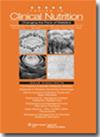女大学生各种预测能量方程与实测基础代谢率的比较
IF 0.4
4区 医学
Q4 NUTRITION & DIETETICS
引用次数: 0
摘要
本研究的目的是比较用各种方程计算的基础代谢率(BMR)和用间接量热计测量的BMR。这项研究是对体重指数低于30的大学二年级女生(n=48)进行的。采用带通风罩的间接量热法作为金标准,并使用了11个预测方程。在这些方程中,Mifflin St Jeor的相关性最高(r=0.435),但Bernstein(66.7%)和Owen(56.3%)是最准确的方程。根据Bland-Altman分析,Bernstein和Owen方程得到了最低的偏差和最高的解释。需要在不同的群体中进行更全面的研究,以开发更高精度的新方程。本文章由计算机程序翻译,如有差异,请以英文原文为准。
Comparison of Various Predictive Energy Equations for Female University Students With Measured Basal Metabolic Rate
The aim of this study was to compare basal metabolic rate (BMR) calculated with various equations and BMR measured using an indirect calorimeter. The study was carried out on second-year university female students (n = 48) with a body mass index of less than 30. Indirect calorimetry with a ventilated hood was accepted as the gold standard and 11 predictive equations were used. Among the equations, Mifflin-St Jeor had the highest correlation (r = 0.435), but Bernstein (66.7%) and Owen (56.3%) were the most accurate equations. According to Bland-Altman analysis, the lowest bias and the highest explanation were obtained with the Bernstein and Owen equations. More comprehensive studies are needed in different groups to develop new equations with higher accuracy.
求助全文
通过发布文献求助,成功后即可免费获取论文全文。
去求助
来源期刊

Topics in Clinical Nutrition
NUTRITION & DIETETICS-
CiteScore
0.90
自引率
20.00%
发文量
34
期刊介绍:
Topics in Clinical Nutrition (TICN) is a peer-reviewed, quarterly journal designed as a resource for the continuing education and clinical practice of dietitians and nutritionists. Each issue addresses topics of interest primarily to dietitians and nutritionists, students and interns in professional training programs and other health care personnel involved in the nutritional care of patients. Articles include translational research reports (work that applies new knowledge to practical effect), practice projects, evidence-based literature reviews, case studies and book reviews, and articles that highlight education theory and applied research which share the tools and techniques of nutrition and dietetics education.
 求助内容:
求助内容: 应助结果提醒方式:
应助结果提醒方式:


